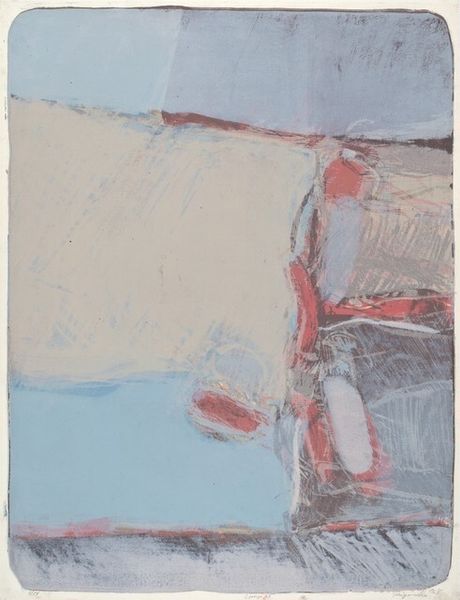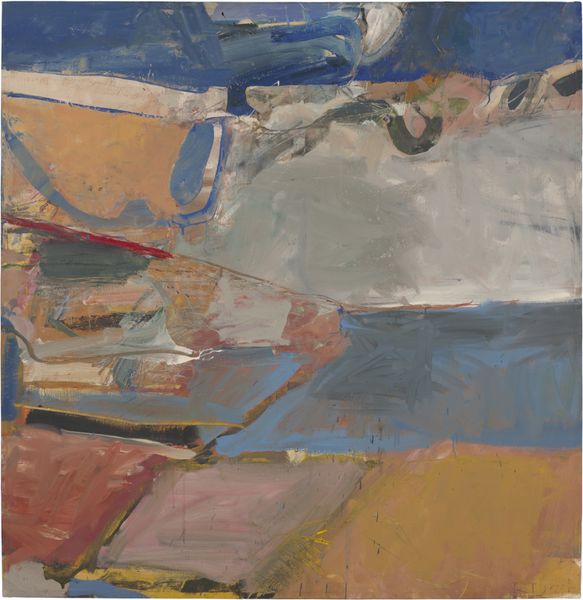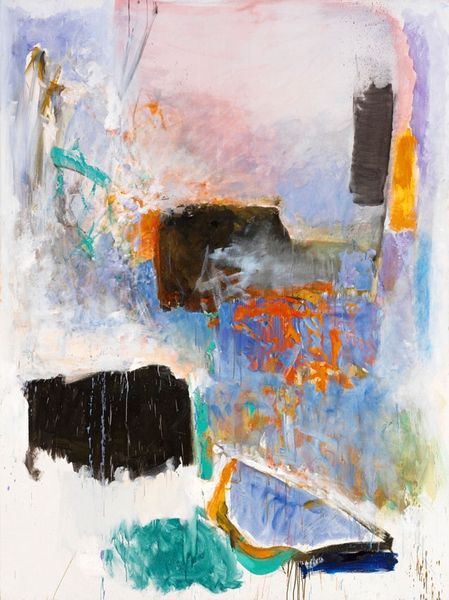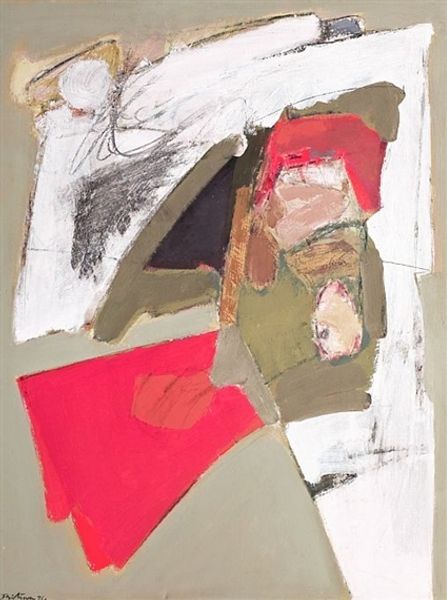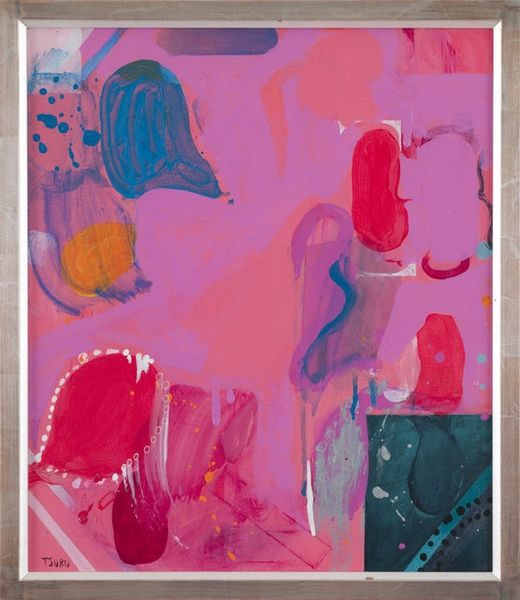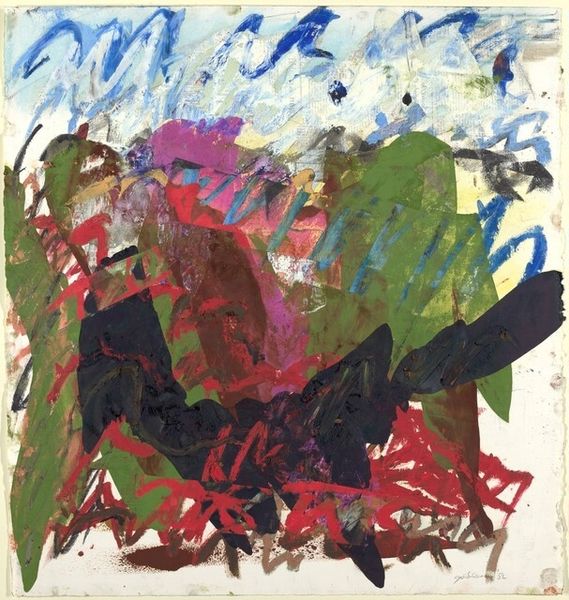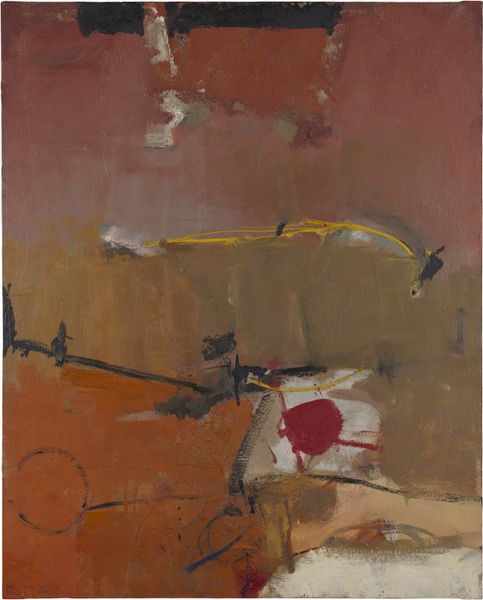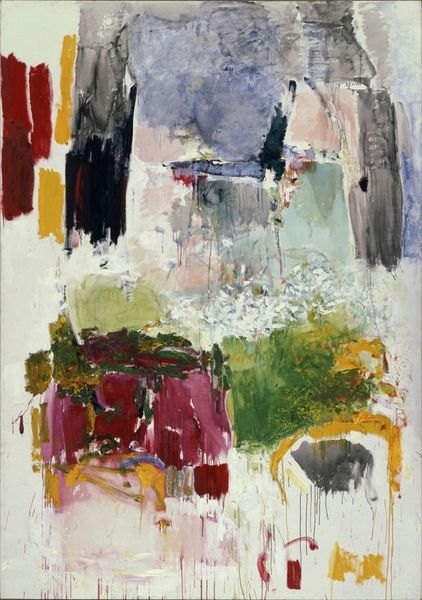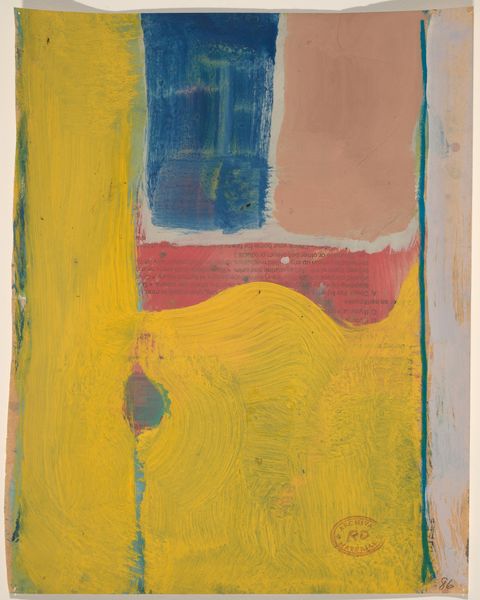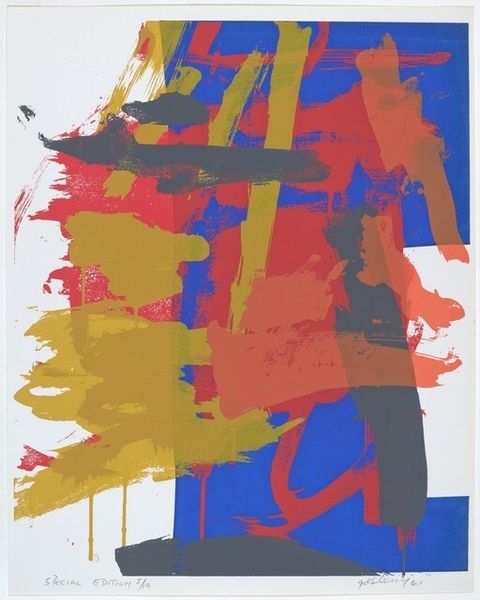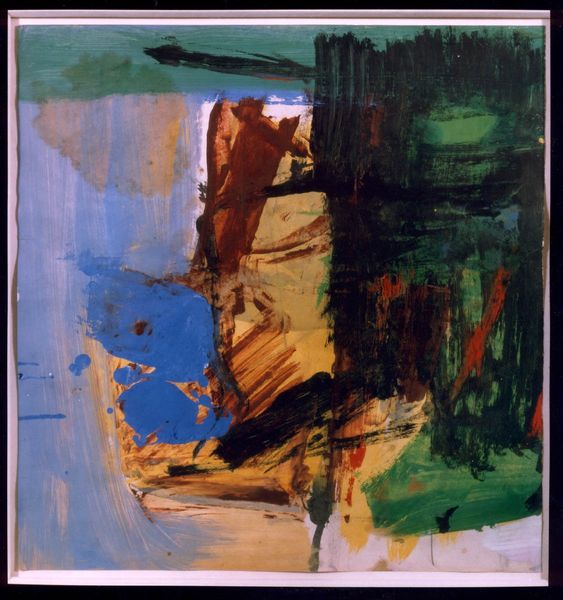
print, gouache
#
gouache
#
abstract-expressionism
# print
#
gouache
#
landscape
#
abstraction
#
modernism
Dimensions: Image: 555 x 405 mm Sheet: 611 x 460 mm
Copyright: National Gallery of Art: CC0 1.0
Curator: What catches my eye immediately is the raw physicality of the paint. It seems almost tactile, despite being on a flat surface. Editor: Indeed. We're looking at "Landscape No. 17" a 1958 gouache on paper by George Joji Miyasaki. And "tactile" is spot-on, given Miyasaki’s interest in conveying direct sensory experiences. Curator: Landscape is such an interesting title. The colour fields evoke, at least to me, a symbolic representation of earth and sky—the ochre and reds against the blue and mauve feel weighted. Do you see other potential archetypes at play? Editor: I think the title sets us up to look for a relationship to land. The interesting question here is: What specific *type* of labor produced these fields and lines? Consider gouache's affordability, its use in mass printing... This likely allowed Miyasaki to democratize his abstract visions to broader audiences during the postwar period. Curator: That makes me reconsider those seemingly haphazard brushstrokes, or even the seemingly arbitrary colours chosen. If mass printing played a key role, does this potentially take away from its intrinsic, emotive qualities? The raw visual components and even the artistic freedom. Editor: Not necessarily take away from. The limited edition nature of this piece 6/11 is clearly meant to be accessible and to signal artistic intent in a unique fashion, however many were produced. Think of Japanese woodblock prints influencing European Modernists. Mass production needn't negate inherent symbolism or the cultural intent that's still visible. The materiality here expands the range of viewers that may experience transcendence or connection. Curator: You're right, I think I got hung up on the traditional landscape symbolism there for a moment, a potential pitfall when confronting abstract works. It really comes alive once one understands the how and the why. Editor: Absolutely. This tension between mass-produced aesthetics and individual, artistic expression invites the viewer to think critically about artistic creation in the modern world, and how artistic gestures can be accessible through their chosen means.
Comments
No comments
Be the first to comment and join the conversation on the ultimate creative platform.
